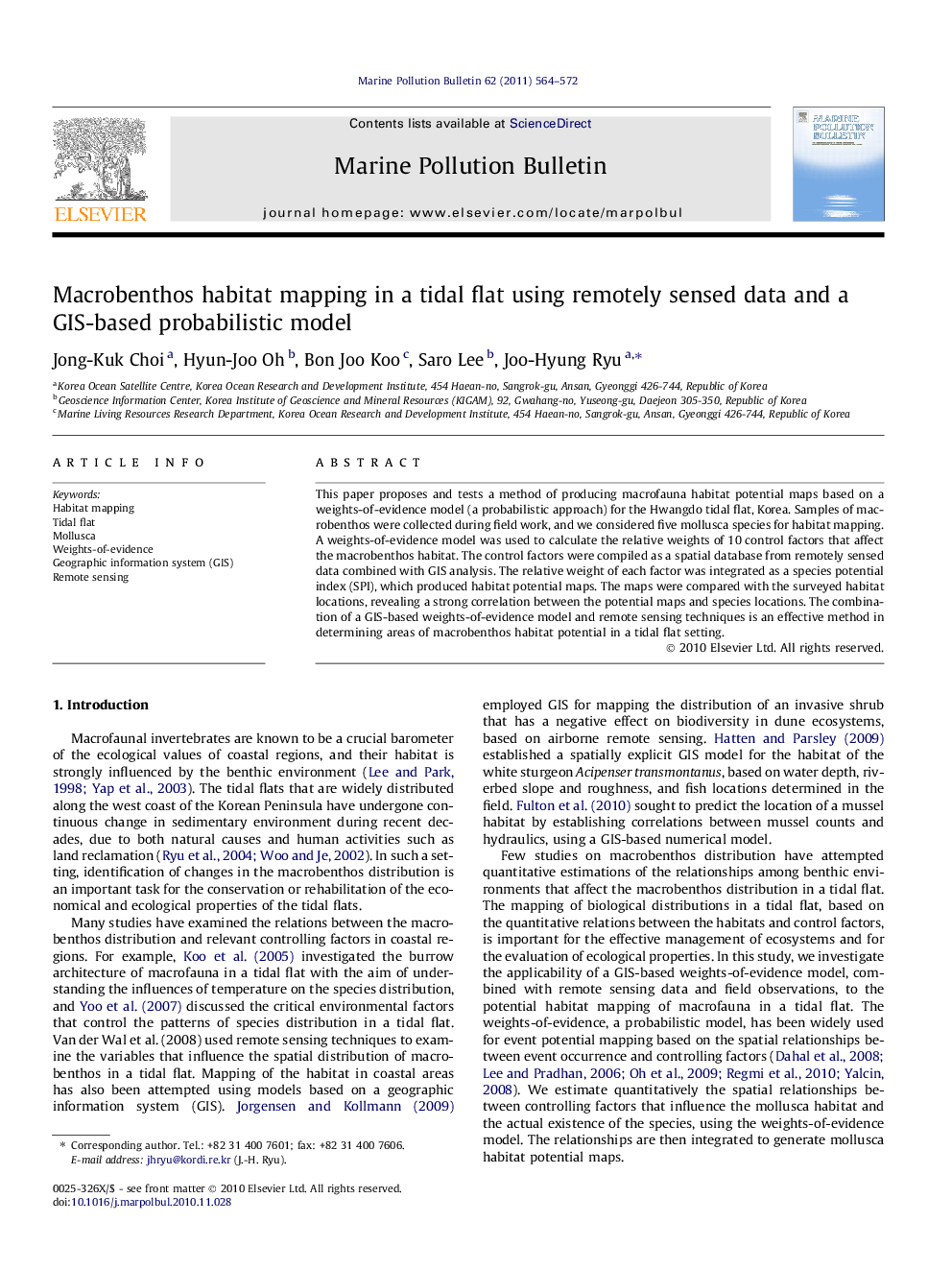| Article ID | Journal | Published Year | Pages | File Type |
|---|---|---|---|---|
| 6362506 | Marine Pollution Bulletin | 2011 | 9 Pages |
This paper proposes and tests a method of producing macrofauna habitat potential maps based on a weights-of-evidence model (a probabilistic approach) for the Hwangdo tidal flat, Korea. Samples of macrobenthos were collected during field work, and we considered five mollusca species for habitat mapping. A weights-of-evidence model was used to calculate the relative weights of 10 control factors that affect the macrobenthos habitat. The control factors were compiled as a spatial database from remotely sensed data combined with GIS analysis. The relative weight of each factor was integrated as a species potential index (SPI), which produced habitat potential maps. The maps were compared with the surveyed habitat locations, revealing a strong correlation between the potential maps and species locations. The combination of a GIS-based weights-of-evidence model and remote sensing techniques is an effective method in determining areas of macrobenthos habitat potential in a tidal flat setting.
Research highlights⺠Remote sensing is effective for mapping the benthic environment in tidal flat. ⺠Ruditapes philippinarum is dominant and occurs mainly in sand flat at low elevations. ⺠Macrobenthos habitat in coastal region is influenced by various benthic environments. ⺠GIS-based weights-of-evidence model is ideal for macrofauna habitat mapping.
